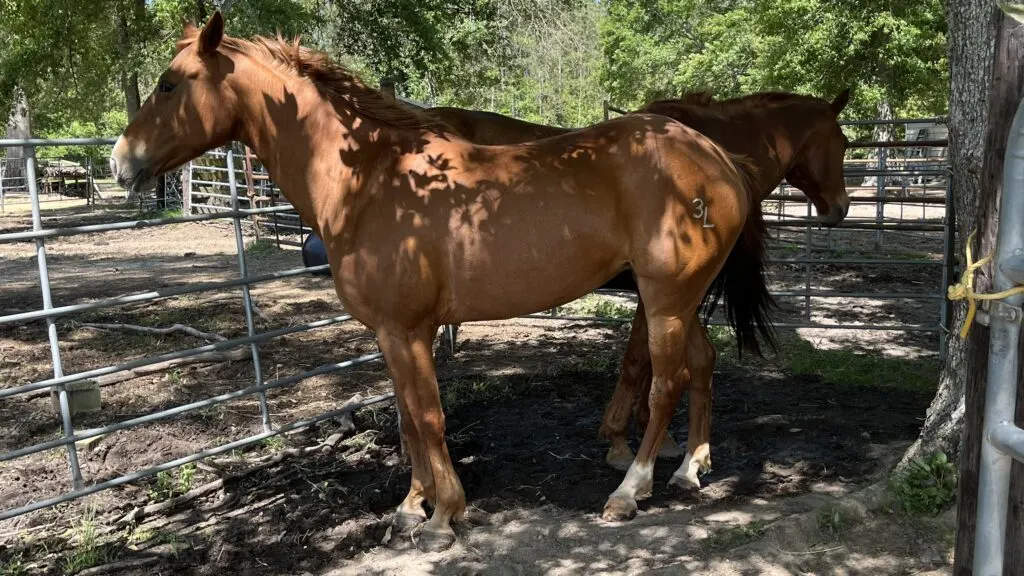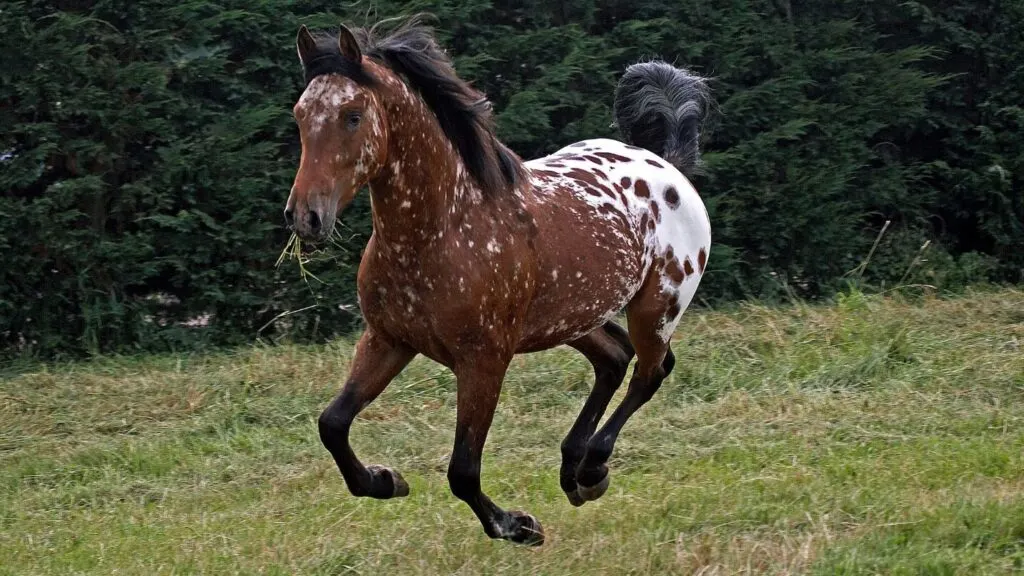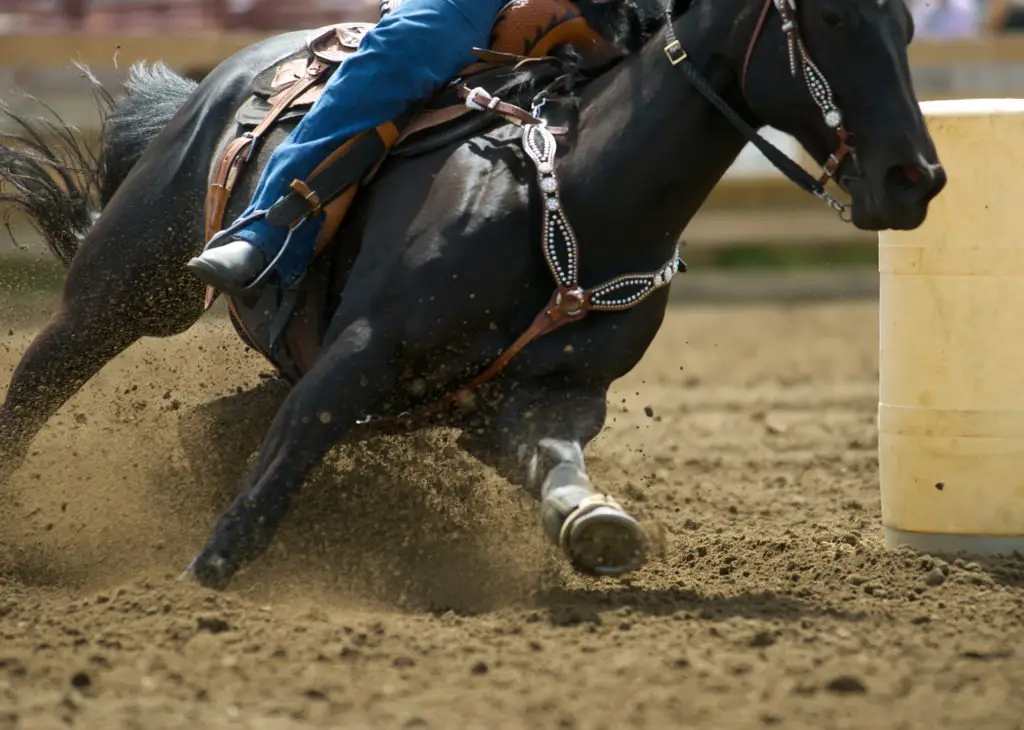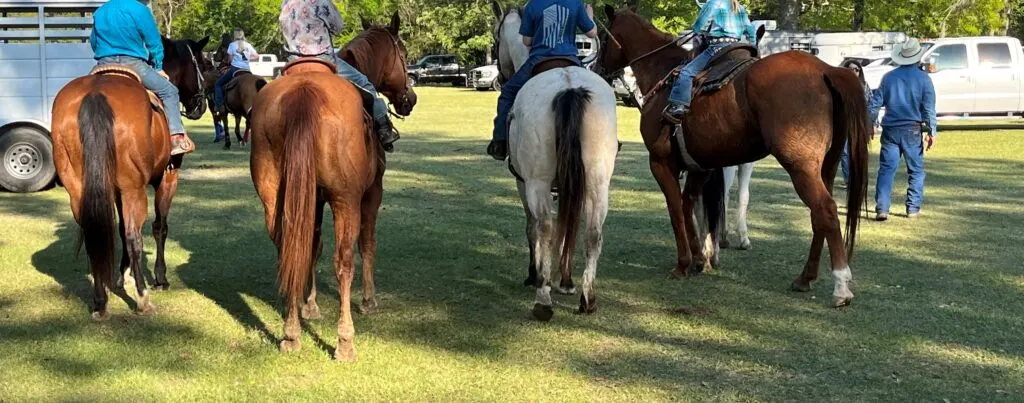Last updated: March 8, 2024
Barrel racing is a fast-paced sport in which riders guide their horses around a cloverleaf pattern of barrels as quickly as possible. As someone who has owned many exceptional barrel horses, I’ve learned that the key to success in this thrilling event lies in choosing the right partner.
In this article, we’ll explore the best horse breeds for barrel racing and help you understand which ones excel in this exciting sport.

1. American Quarter Horse: The Top Choice for Barrel Racing
Renowned for their explosive speed and agility, American Quarter Horses are the gold standard in barrel racing. Their powerful hindquarters allow for quick acceleration, while their calm temperament makes them ideal for the high-pressure environment of the arena.
- Strengths: American Quarter Horses are the stars of barrel racing. Known for their incredible speed over short distances, they can sprint fast and turn on a dime, perfect for barrel racing’s sharp turns.
- Weaknesses: Some may lack the endurance needed for longer courses or repeated runs in competitions.
- Why They’re Suited: Their powerful hindquarters give them explosive speed, essential for the quick bursts needed in barrel racing.
2. American Paint Horse
With a similar build to the Quarter Horse, Paint Horses combine speed with stunning looks. Their agility and trainable nature make them a popular choice for barrel racers looking for a horse that can turn heads and burn up the track.
- Strengths: Paint Horses are not just about their stunning looks; they are also known for their agility and speed. They share many qualities with Quarter Horses.
- Weaknesses: Some Paints are bred more for show than speed, which might affect their performance in barrel racing.
- Why They’re Suited: They often have the muscle and build of a Quarter Horse, making them good for quick, powerful runs.
3. Thoroughbred
Known for their incredible stamina and long-distance speed, Thoroughbreds bring grace and power to the barrel racing world. While they may require an experienced hand due to their spirited nature, their agility and intelligence make them formidable competitors.
- Strengths: Thoroughbreds are known for their long-distance speed and stamina. They bring grace and agility to barrel racing.
- Weaknesses: Compared to stockier breeds, they might be too tall and lean for the tight turns in barrel racing.
- Why They’re Suited: Their endurance and speed are great for longer barrel racing courses where stamina plays a role.

4. Appaloosa
The Appaloosa’s versatility and strong build, coupled with their distinctive spotted coat, make them a favorite among barrel racers. Their agility and strength are key assets in navigating the tight turns of the barrel racing pattern.
- Strengths: Appaloosas are versatile and known for their agility. They have a strong build and can be quite fast.
- Weaknesses: They might not be as quick off the mark as Quarter Horses, which can be a disadvantage in a sport where every second counts.
- Why They’re Suited: Their agility and strength make them good for the turns and sprints in barrel racing.
5. Arabian
While not as commonly associated with barrel racing as other breeds, Arabians have proven their worth in the arena thanks to their high stamina, intelligence, and quick learning ability. Their smaller stature allows for nimble movements and tight turns around the barrels.

Grade Horses: The Underrated Champions in Barrel Racing
Grade horses, those without registered pedigrees, are hidden gems in barrel racing. Their mixed heritage often combines speed, agility, and the ideal temperament for the sport at a budget-friendly cost. When choosing a grade horse, prioritize strong hindquarters, balanced build, and eagerness to learn.
With the right training and bond, grade horses excel in barrel racing, showcasing that success isn’t just about pedigree but the unique qualities and dedication of each horse and rider.
Lesser-Known Breeds for Barrel Racing Success
Beyond the popular American Quarter Horse, Paint Horse, and Thoroughbred, several underrated breeds shine in barrel racing. These breeds bring unique qualities to the arena, proving that with the right training and dedication, they can compete at top levels:
- Morgan: Known for their athleticism and strong work ethic, Morgans are agile, muscular, and eager learners, making them excellent contenders in barrel racing. Learn more about Morgans.
- Standardbred: Often overshadowed by Thoroughbreds, Standardbreds boast exceptional stamina and athleticism. Their powerful hindquarters enable them to excel in barrel racing’s speed and agility demands.
- Pony Breeds: Welsh Ponies and POAs (Pony of the Americas) offer surprising competitiveness in barrel racing, particularly for youth riders. Their smaller stature allows for quick, agile movements perfect for navigating barrels.
- Mustang: The American Mustang, celebrated for its adaptability and robust build, can also achieve success in barrel racing. These horses, when paired with a patient and experienced rider, demonstrate remarkable athleticism and determination. Discover the Mustang’s qualities.
Comparison of the Top Horse Breeds for Barrel Racing
In barrel racing, the breed of your horse can make a big difference. Here’s a look at some top breeds, focusing on what makes them good (or not so good) for barrel racing.
| Horse Breed | Strengths | Weaknesses | Why Suited for Barrel Racing |
|---|---|---|---|
| American Quarter Horse | Fast sprints, agile, powerful hindquarters. | May lack endurance for longer courses. | Ideal for quick bursts and sharp turns in barrel racing. |
| Thoroughbred | Long-distance speed, stamina, agility. | Too tall and lean for tight turns. | Good for longer courses where stamina is important. |
| Paint Horse | Agility, speed, similar build to Quarter Horses. | Some bred for show, not speed. | Muscle and build suited for powerful runs. |
| Arabian | Agile, quick, high stamina, intelligent. | Less raw sprinting power compared to Quarter Horses. | Great for technical aspects due to agility and learning ability. |
| Appaloosa | Versatile, agile, strong build. | Not as quick off the mark as Quarter Horses. | Agility and strength beneficial for turns and sprints. |

Choosing Your Barrel Racing Partner: Insights and Essential Traits
In the dynamic world of barrel racing, the difference between winning and just participating often lies in the inherent qualities of the horse. Here’s a concise overview of what makes a barrel racer truly stand out:
- Temperament Matters: The ideal horse should complement your riding style and personality. A competitive yet calm demeanor under pressure is crucial for navigating the high-stakes environment of barrel racing.
- Training and Conditioning: Success requires more than natural ability; consistent training and conditioning are paramount. Developing a strong bond based on trust and mutual understanding enhances performance and teamwork.
- Health and Conformation: Vital for a horse’s ability to perform and endure the rigors of the sport. Look for strong hindquarters and a balanced build, indicators of the necessary explosive power for barrel racing.
- Agility: Essential for making tight turns and quick direction changes. Agility, coupled with responsiveness to rider cues, sets apart top competitors. Explore more about the agility needed in horseback riding here.
- Speed and Quickness: A pedigree known for speed can be a game-changer. Esteemed sires like Frenchmans Guy and Dash Ta Fame exemplify the lineage that excels in barrel racing.
- Eagerness to Learn: A horse eager to learn and adapt is invaluable. This trait ensures a smoother training process and a higher likelihood of success in mastering the barrel pattern.

Choosing the Right Horse for Your Barrel Racing Goals
When selecting the perfect barrel racing partner, it’s essential to consider your individual goals and preferences in order to make the best decision. Here are some factors to keep in mind while searching for the ideal barrel racing horse:
- Skill Level & Experience: Beginners should seek well-trained, experienced horses to ease the learning curve, while veterans might opt for younger talents to shape and grow with. Choosing the best horse for beginners can provide additional insights.
- Budget Considerations: Set a realistic budget not just for the purchase but for ongoing care. Quality doesn’t always mean expensive; many capable horses are available at various price points.
- Trial Period: Always “try before you buy” to ensure compatibility. This hands-on experience is invaluable in assessing whether a horse meets your barrel racing goals.
Optimal Age for a Barrel Racing Horse
The ideal age to start a horse in barrel racing is around five years old, this is when they’ve reached physical maturity and have undergone basic training. However, readiness varies, and it’s essential to consider physical and mental maturity. Understanding a horse’s growth can help gauge the right time to begin barrel racing training.
FAQs for Choosing the Best Barrel Racing Horse
Can any horse breed participate in barrel racing?
Yes, while certain breeds like the American Quarter Horse, Paint Horse, and Thoroughbred are more commonly associated with barrel racing due to their speed and agility, any horse breed can participate. Success depends more on the individual horse’s qualities, such as agility, speed, and willingness to learn.
What is the best age to start training a horse for barrel racing?
Horses typically begin their barrel racing training around the age of five. This allows them to mature physically and mentally, ensuring they can handle the demands of the sport. However, readiness can vary, so it’s important to consider each horse’s individual development.
How important is a horse’s temperament in barrel racing?
Temperament is crucial in barrel racing. A horse that matches the rider’s personality and style can significantly impact their success. Look for a horse with a competitive spirit but calm under pressure, as they need to perform in high-stakes environments.
Should I choose a horse based on breed or individual qualities?
While breed can provide a general idea of a horse’s potential in barrel racing, individual qualities are more important. Focus on the horse’s agility, speed, conformation, and eagerness to learn, as these traits are key to success in barrel racing.
Is it necessary to “try before you buy” when selecting a barrel racing horse?
Absolutely. Spending time riding and interacting with a potential barrel racing horse is essential to assess their abilities, temperament, and how well they match your goals and riding style. This hands-on experience can help you make a more informed decision.
Conclusion: Best Horse Breeds for Barrel Racing
Selecting the best horse for barrel racing is a blend of choosing the right breed and finding a horse whose personality and capabilities align with your own. With the right partner, the journey through the barrels can be as rewarding as crossing the finish line.
Remember, every horse is an individual, and while breeds can guide your choice, the heart and connection you share with your horse are what truly make a champion in the arena.
Stay Connected and Informed:
- If you found this guide helpful, consider signing up for our newsletter for more insights and updates on horses.
- For personalized advice or specific inquiries, feel free to contact me directly. I’m here to help.
Join the Conversation:
- I encourage you to share your thoughts, experiences, or questions in the comments section below. Let’s create a community of informed and passionate horse owners.
- Don’t forget to share this article with your network. Use the social share buttons to spread the knowledge and love for horses.
Thank you for reading, and I look forward to connecting with you, whether it’s through our newsletter, direct communication, or in the comments section. Here’s to the thrilling journey of racehorse ownership!
Related articles
- What is the Best Horse Breed? (Top 3 Breeds By Activity)
- What is the Best Horse Breed for Beginner Riders?
